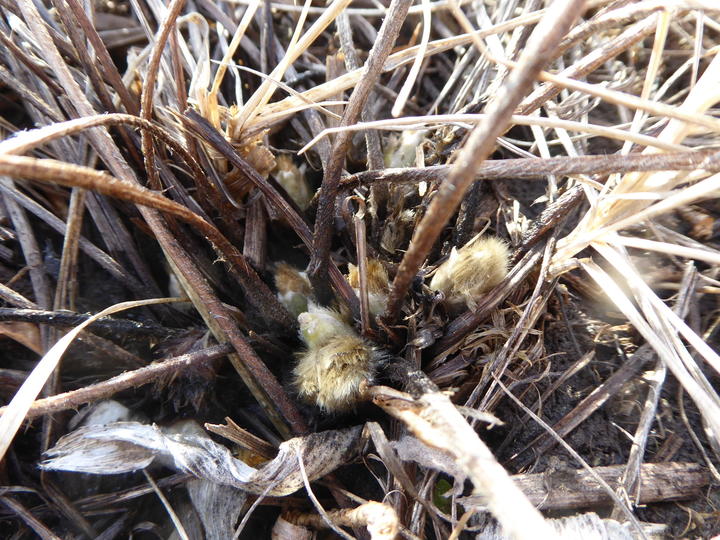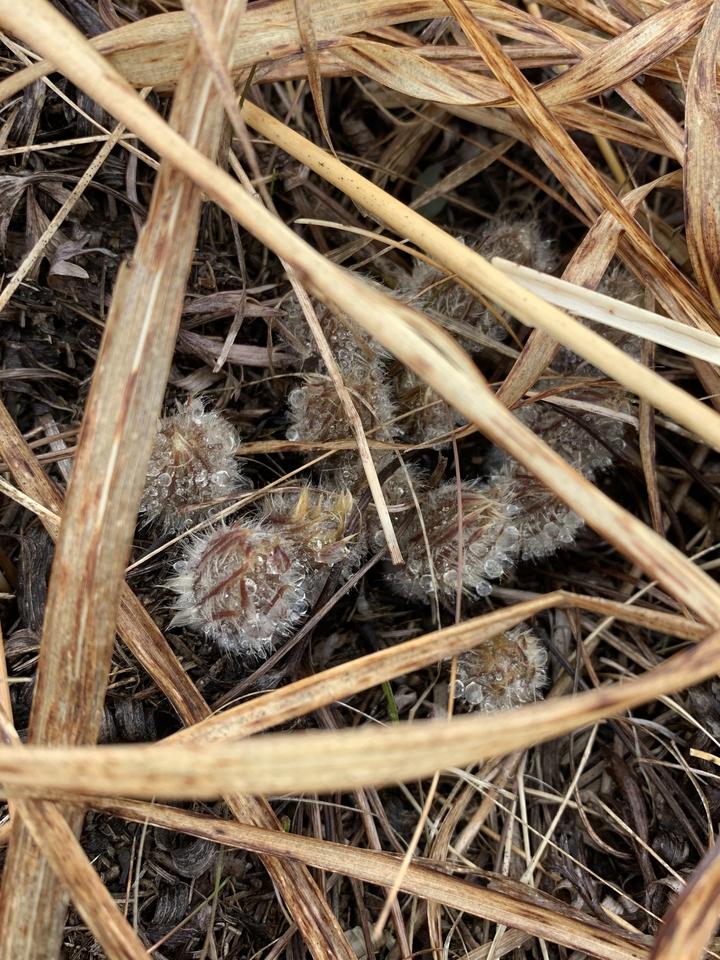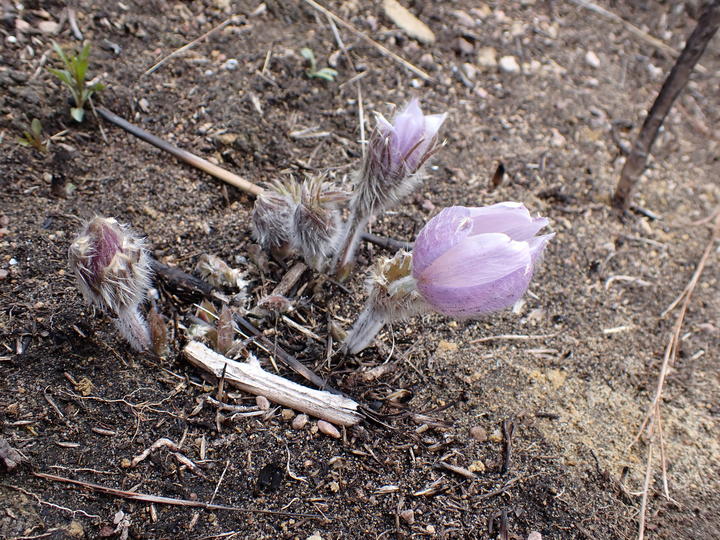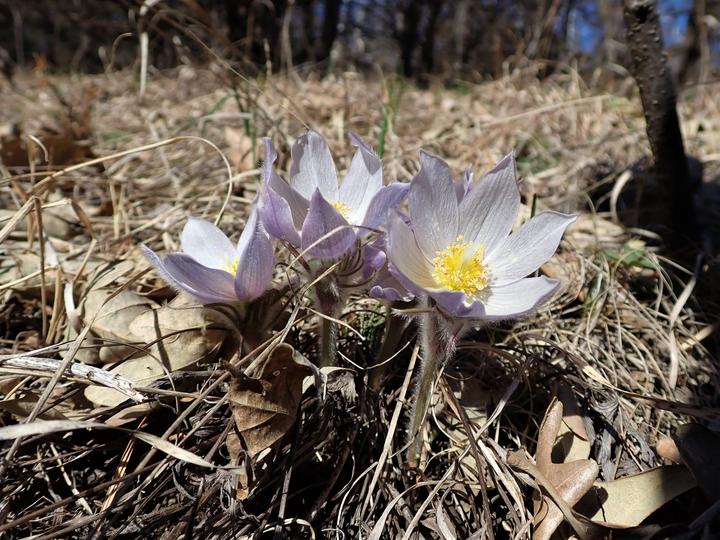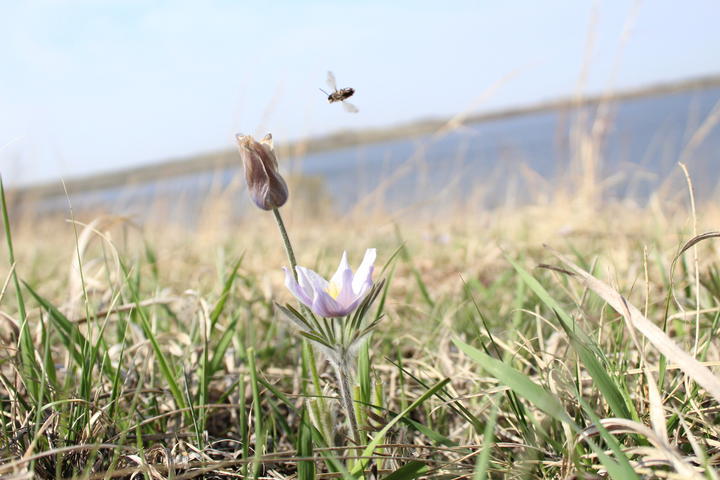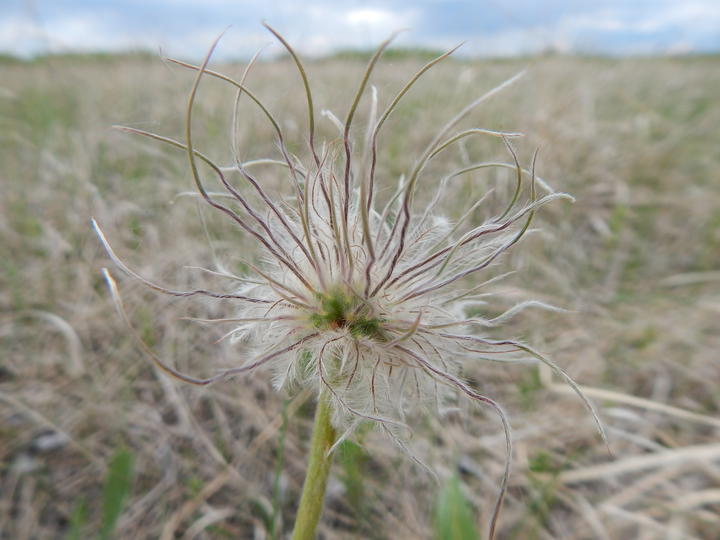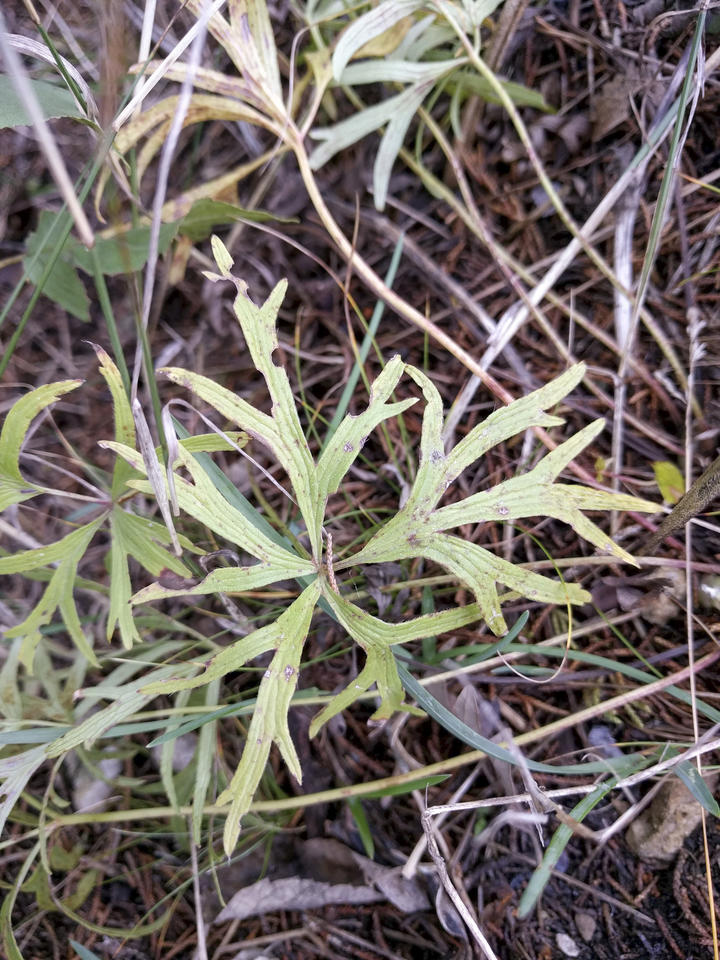More names for this plant
The Dakota and Anishinaabe were among the earliest people to name Minnesota’s plants and animals, as well as to understand them in relation to Minnesota’s climate and seasons. Those original names are still in use, and several are included on the Season Watch website. However, complete translations were not available.
Latin (or scientific name): Anemone patens (formerly Pulsatilla nuttalliana)
The scientific community has a convention of assigning agreed-upon Latin names to every kind of organism. Using scientific names helps people communicate confidently about the same organism and organize lifeforms based on how closely related they are.
More common names: American pasqueflower, cutleaf anenome, pasqueflower, prairie pasqueflower
Page contents
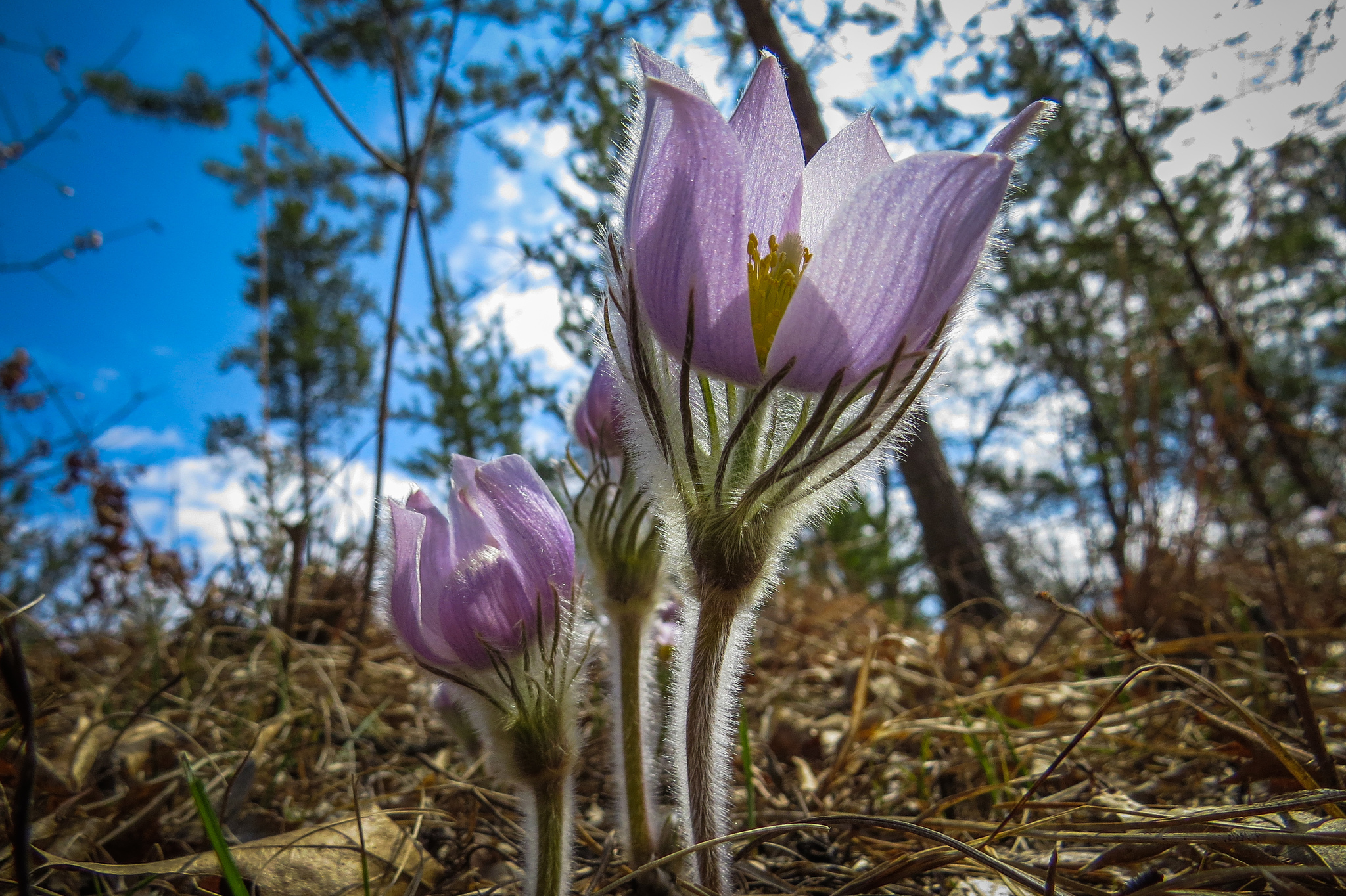
April 25, 2020, Crow Wing County, Minnesota
Photo © lcplinske, some rights reserved (CC-BY-NC)
iNaturalist observation
About the pasqueflower
- The pasqueflower is a perennial plant that grows up to eighteen inches in height and has light purple flowers with yellow centers.
- Pasqueflowers bloom very early in the spring. They bloom so early, in fact, that flowers open before the plant has its new leaves for the year. Like crocuses, sometimes they flower while there is still snow on the ground.
- They are often found in prairies in the southern and western parts of Minnesota.
- Fun fact: Pasqueflowers get their name from the French word for Easter because they often bloom around the holiday.
Visual guide to phenology
Watch for the appearance of leaves, flowers, and fruits. Take notice of when flowers open and fruits ripen.
Note to observers
This page explains general clues to watch for when observing pasqueflower phenology. However, this page does not explain how to identify this plant or collect data in a standardized way.
- For help with identification, see Minnesota Wildflowers.
- For guidance on collecting data, see Nature’s Notebook.
Graphs and historical data
Note: The Orientation Center provides a map, as well as information on reading graphs; interpreting summary statistics, who collected the data and how; and how to download datasets for independent exploration.
Flowering
- Earliest: April 3 (occurred in 1959)
- Average: April 17
- Latest: May 1 (occurred in 1978)
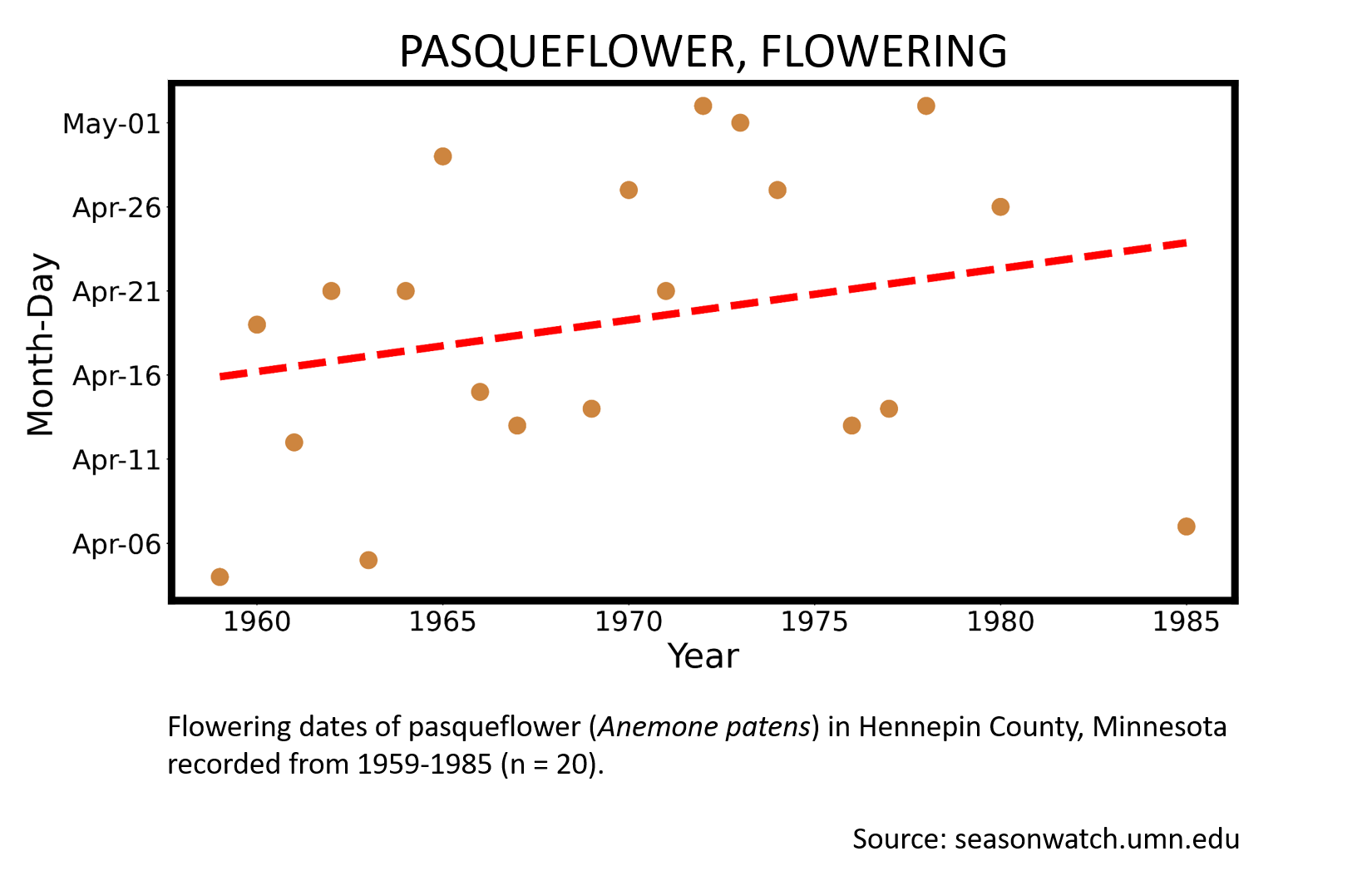
Last flower
- Earliest: April 19 (occurred in 1985)
- Average: May 7
- Latest: May 18 (occurred in 1975)
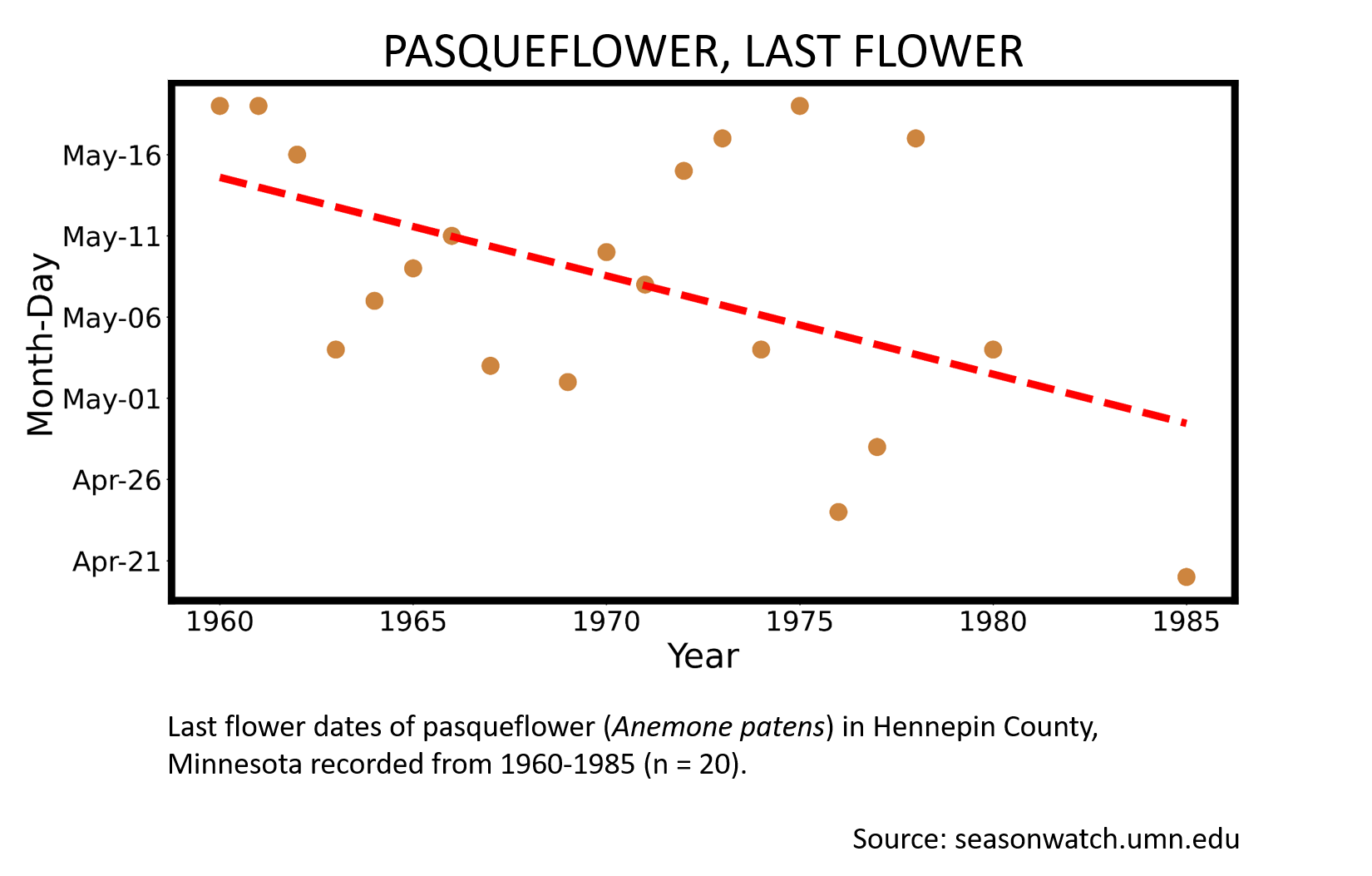
Last flower
- Earliest: April 12 (occurred in 2010)
- Average: May 19
- Latest: July 27 (occurred in 2003)
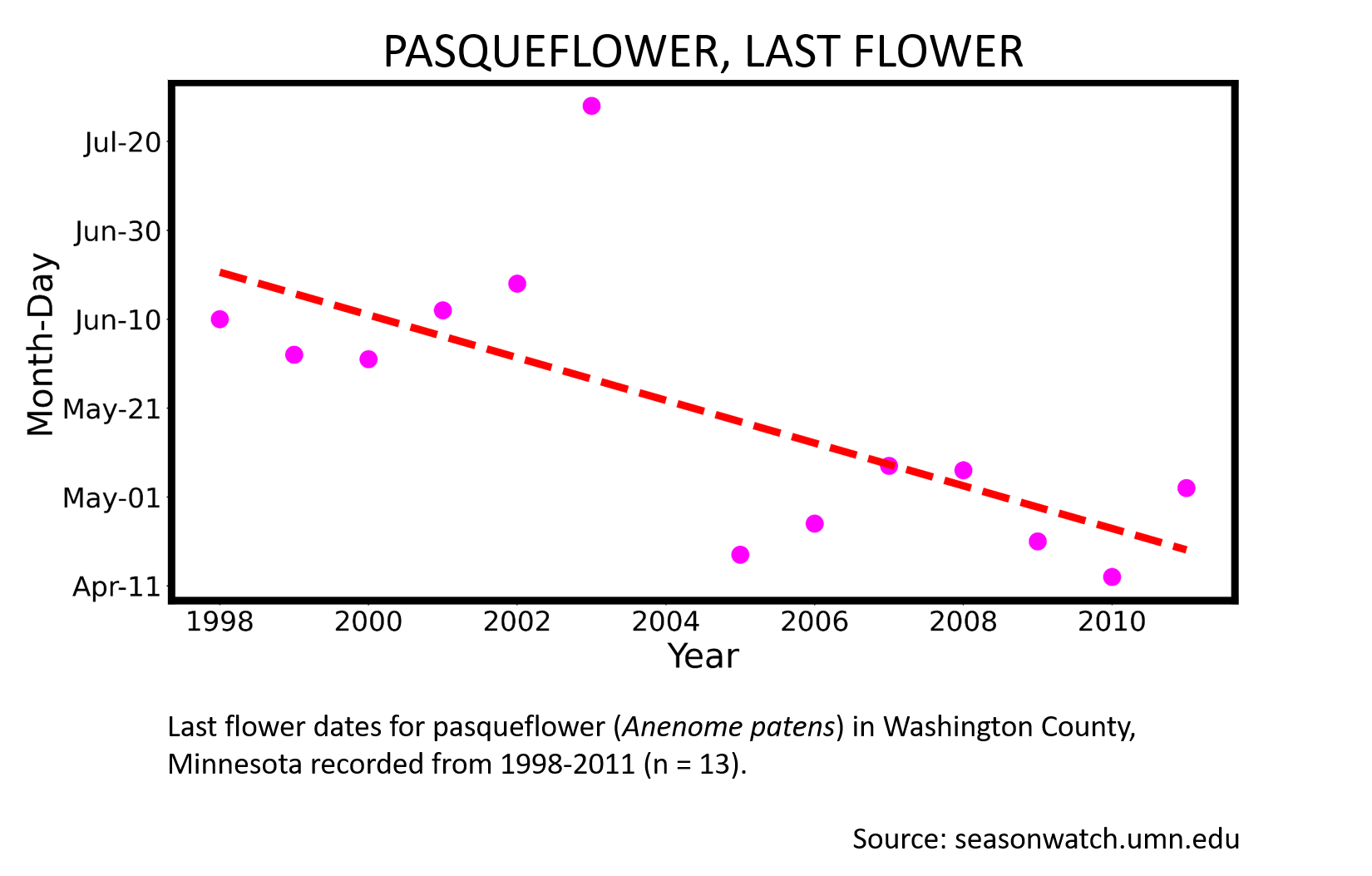
More resources
Keep exploring Season Watch
Keep exploring Season Watch
Co-author: Lynsey Nass, Minnesota Master Naturalist
